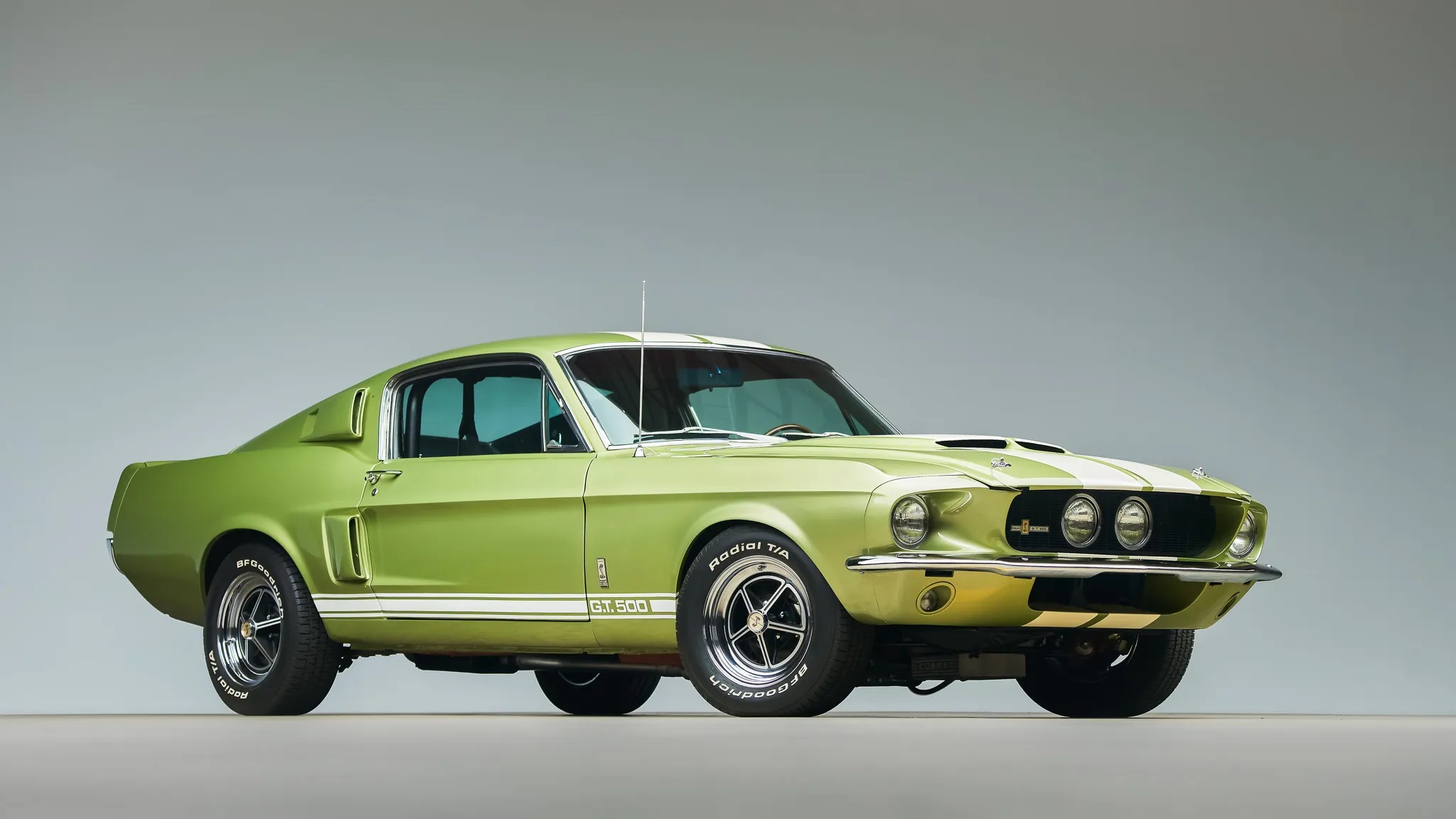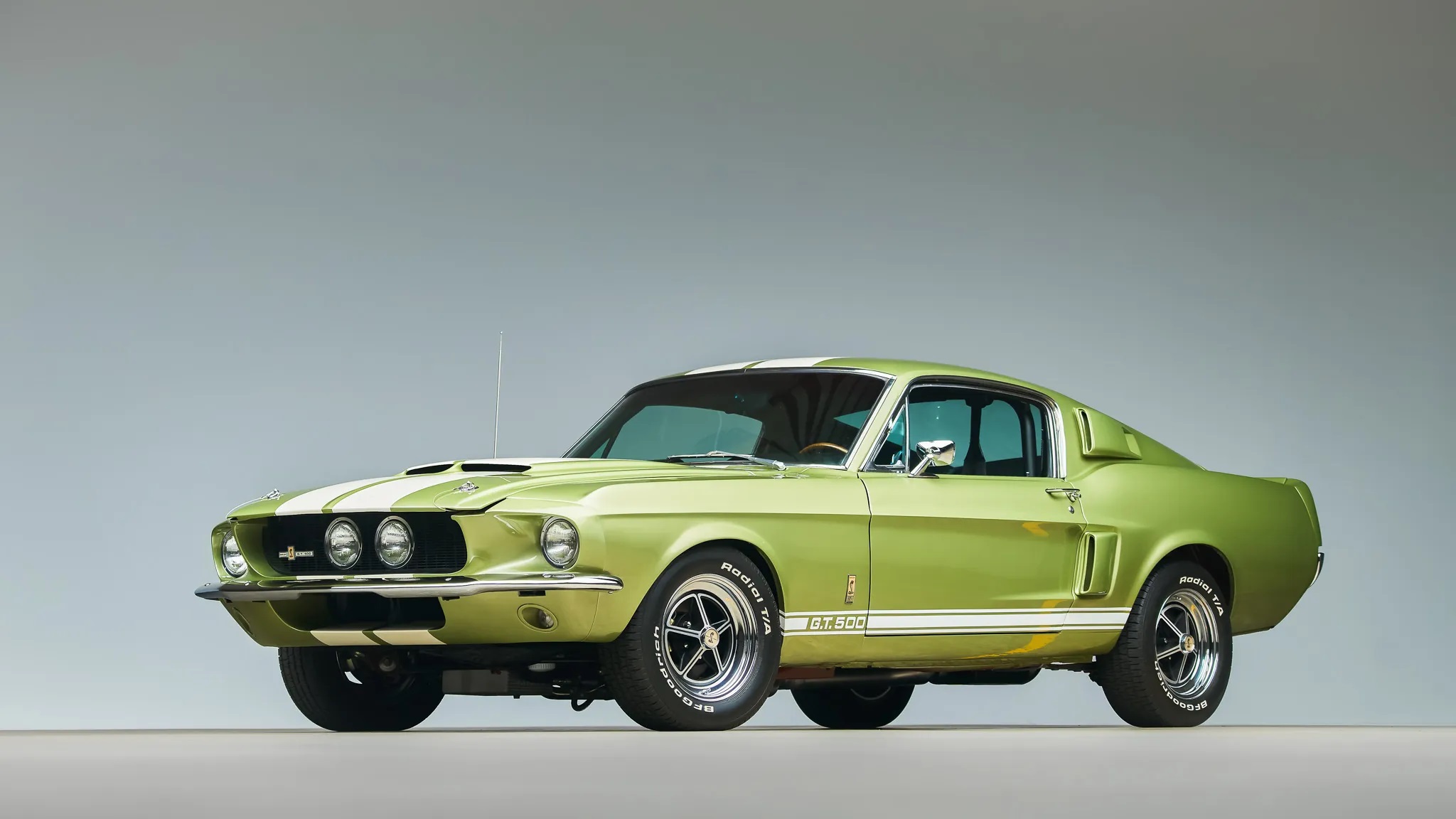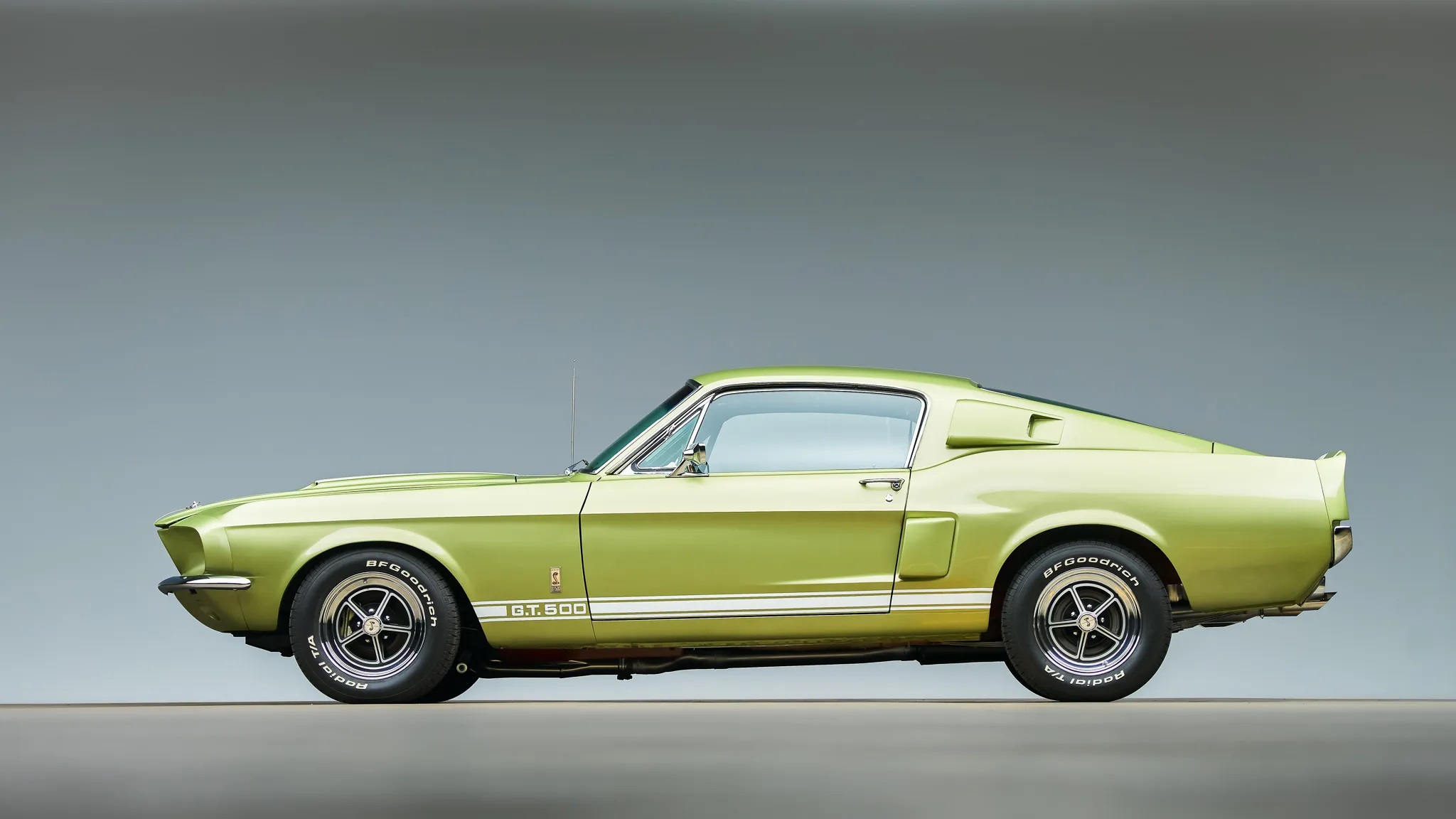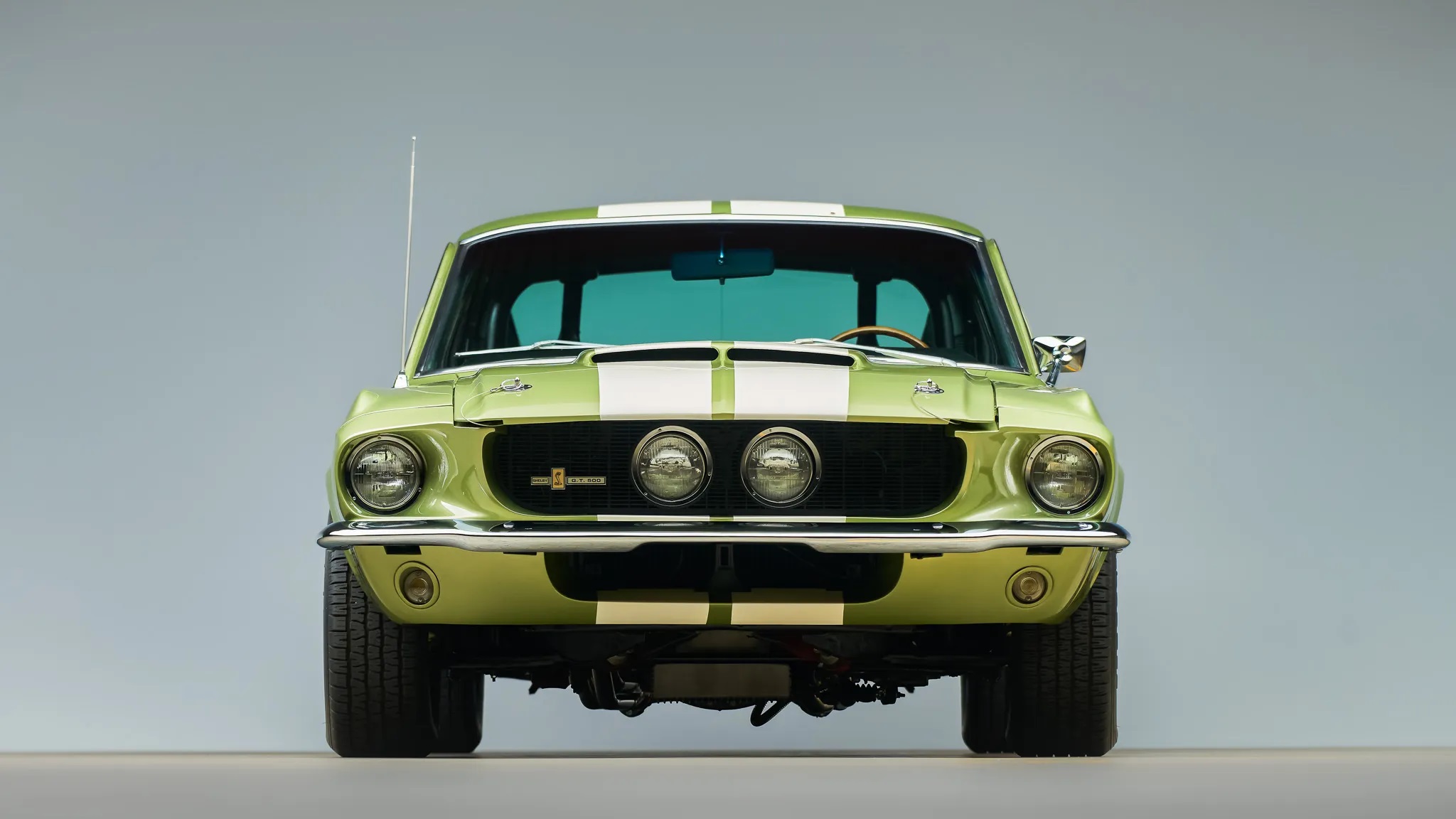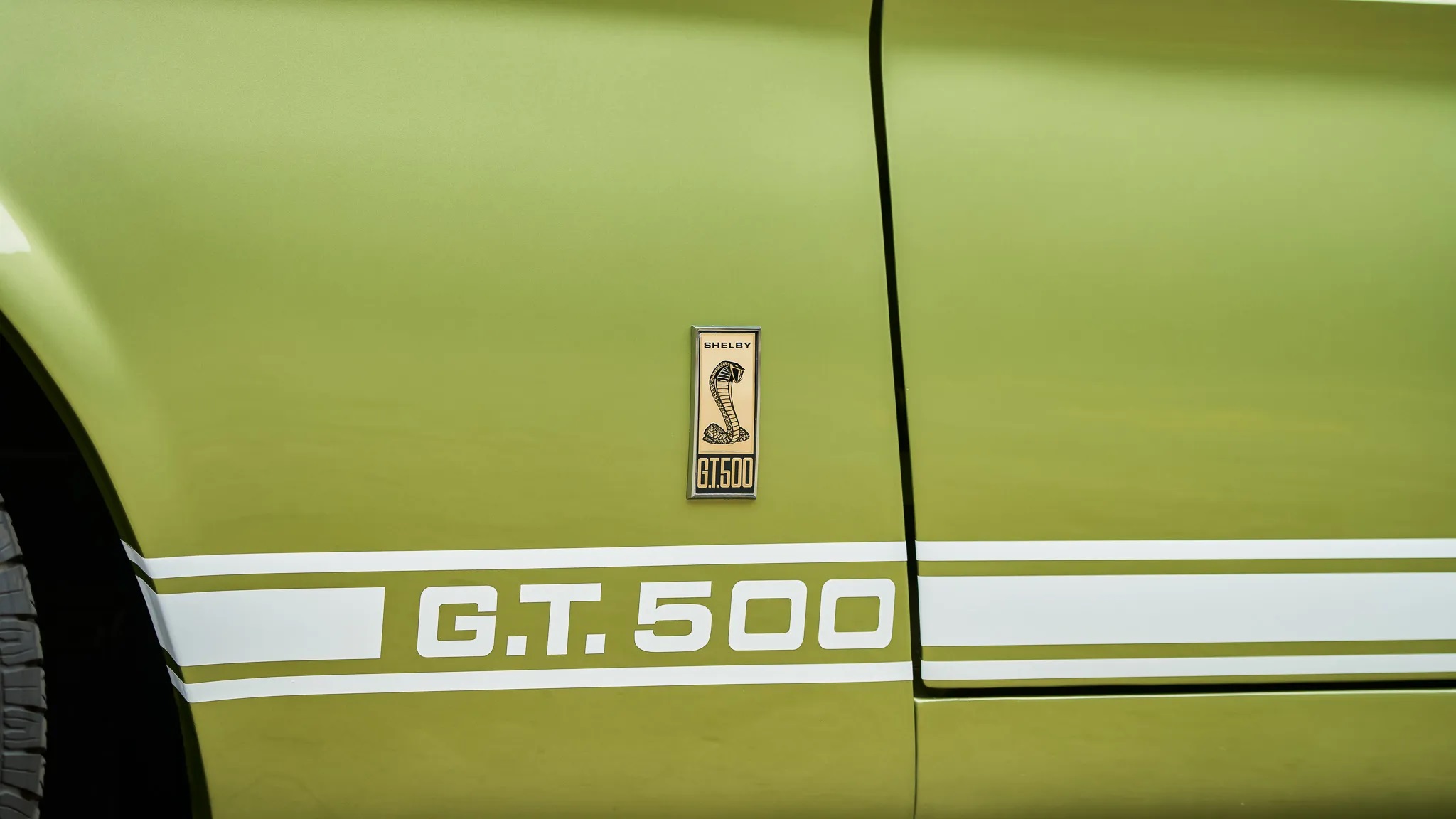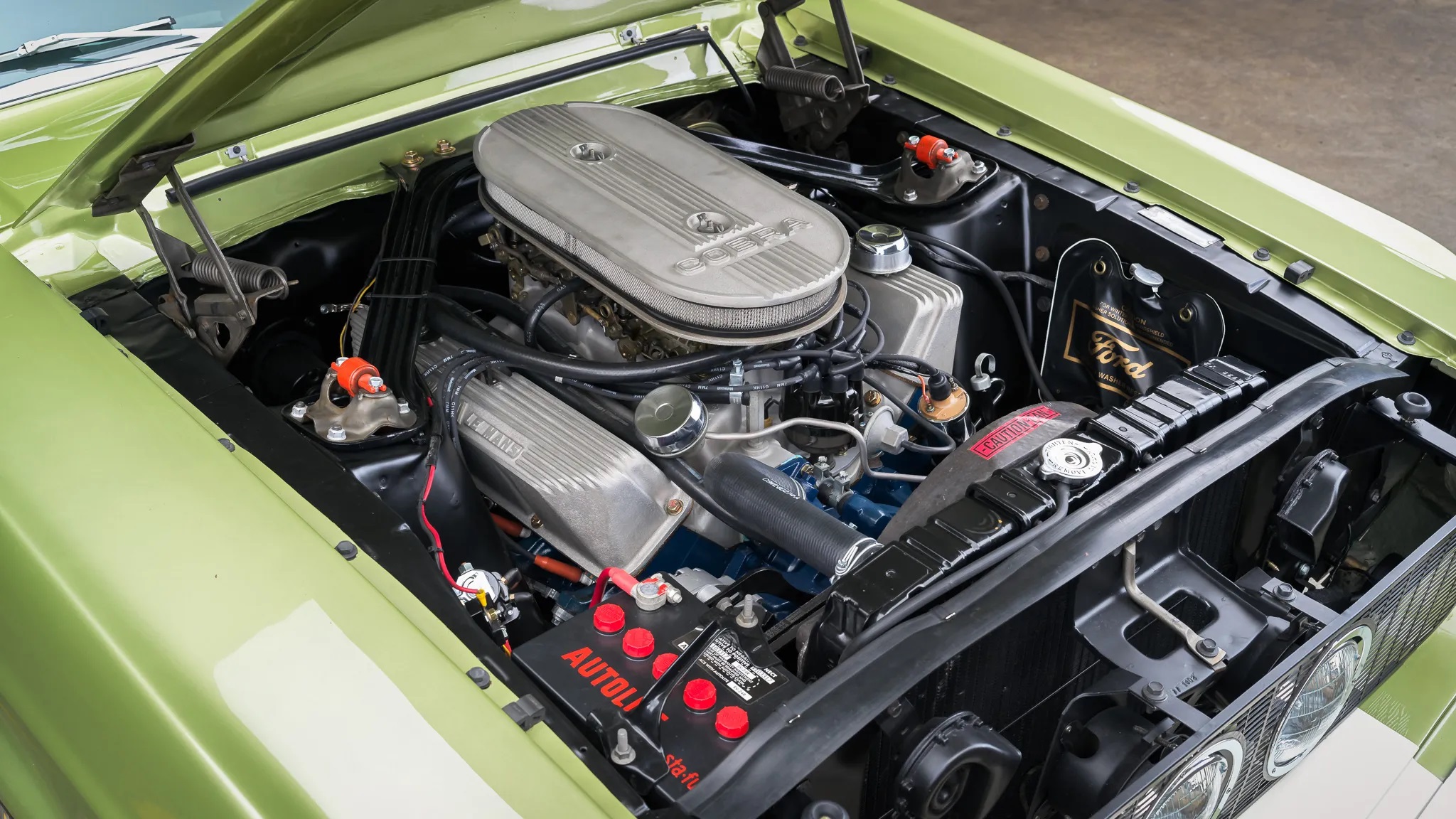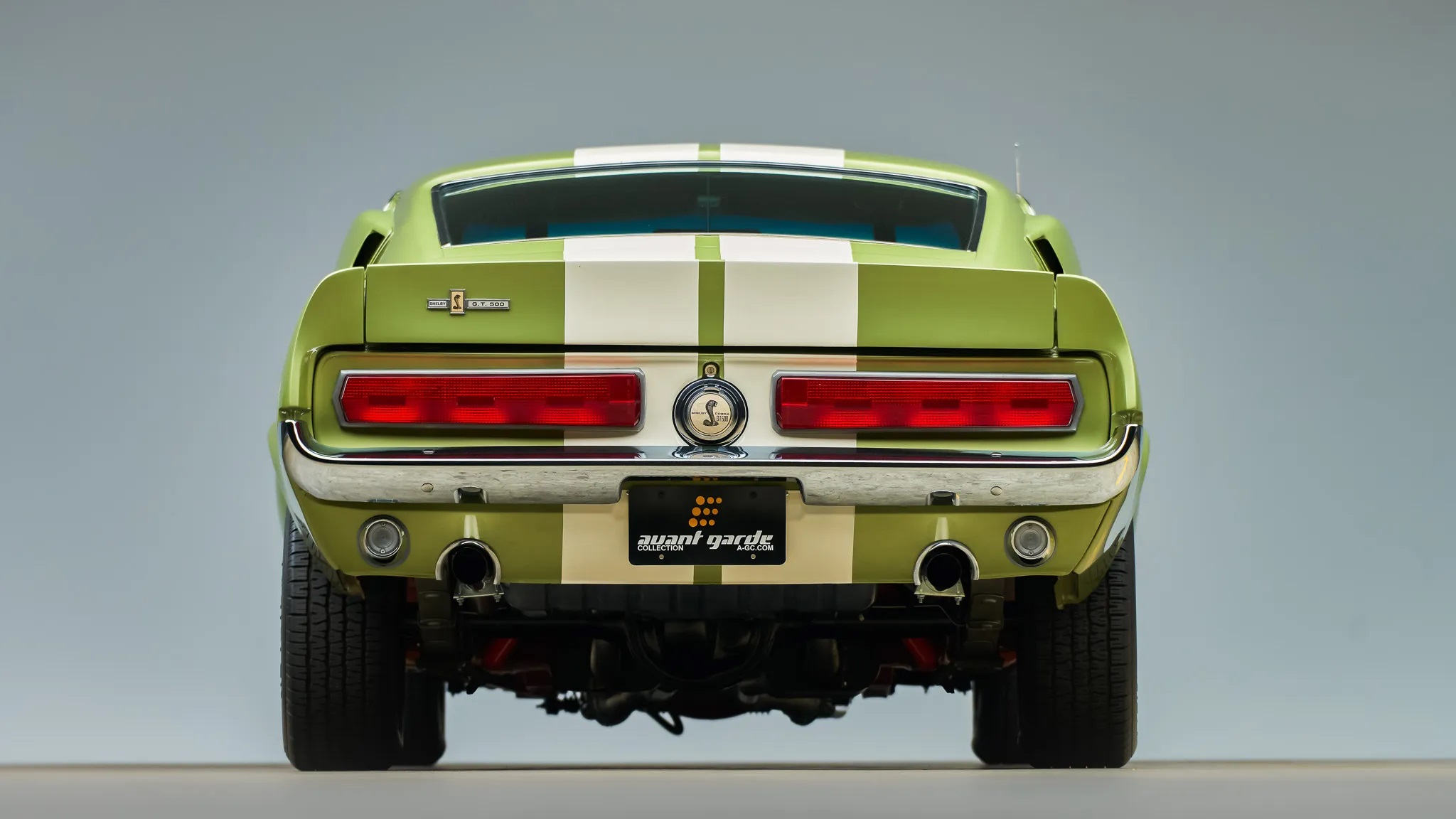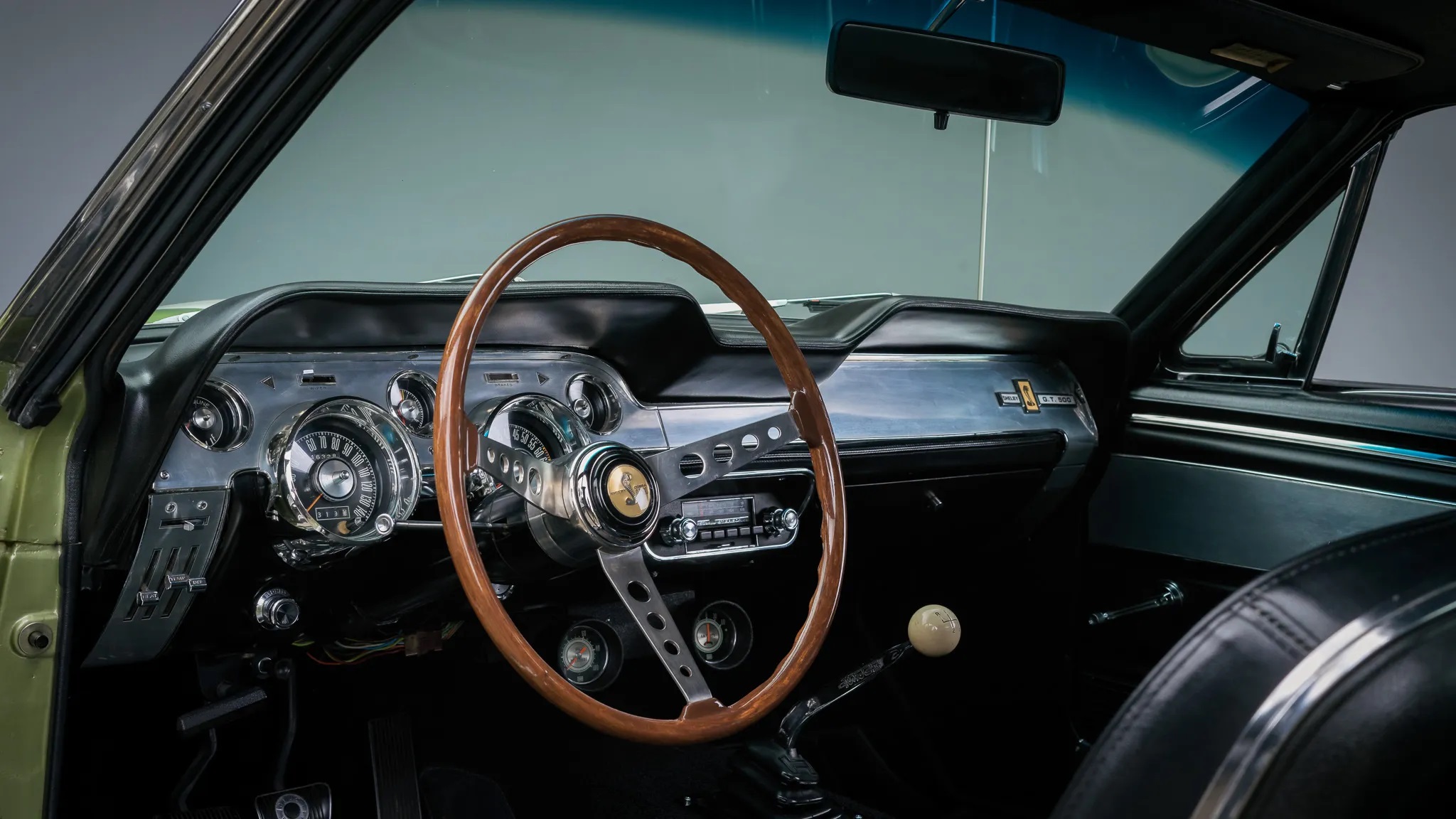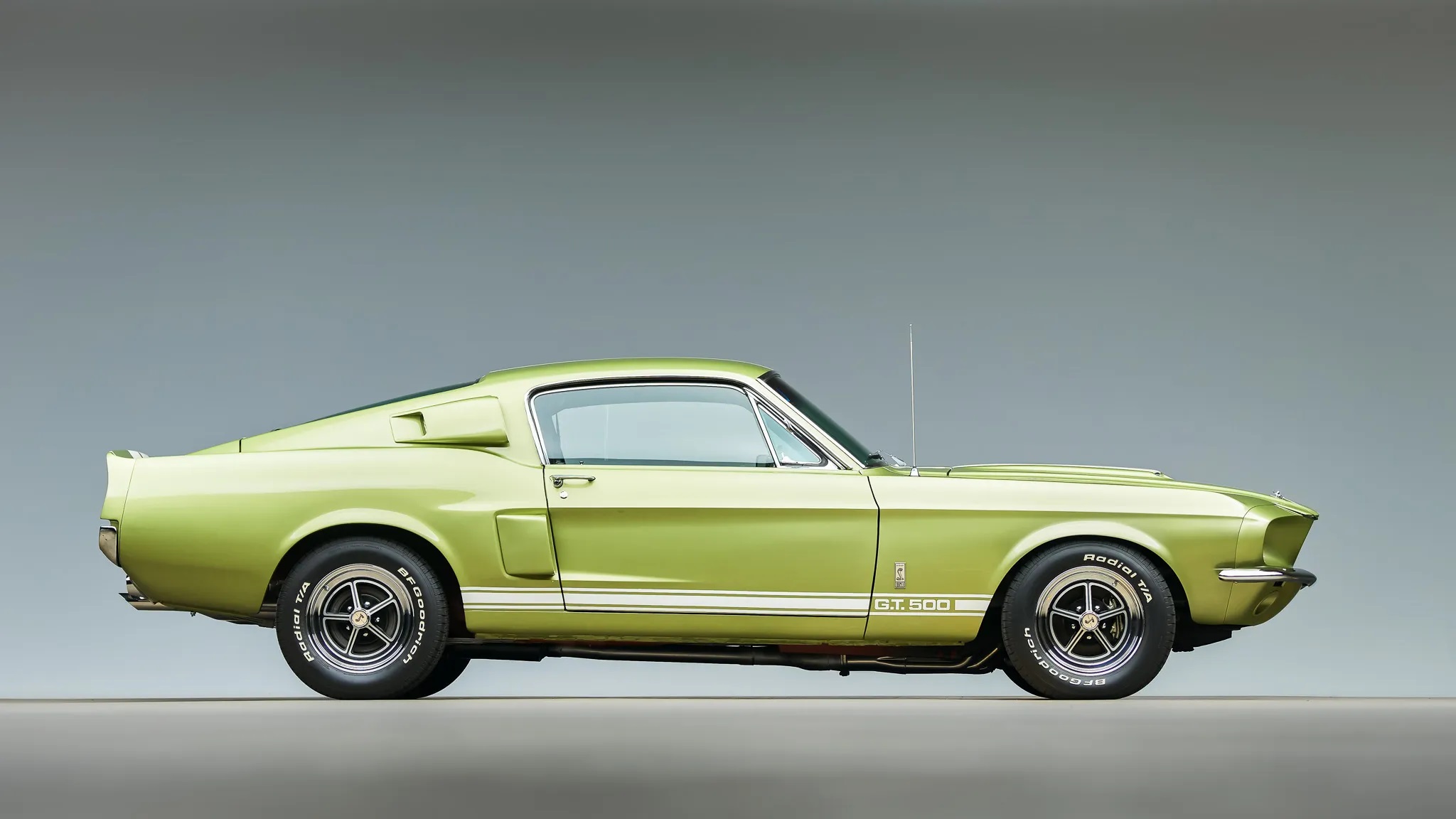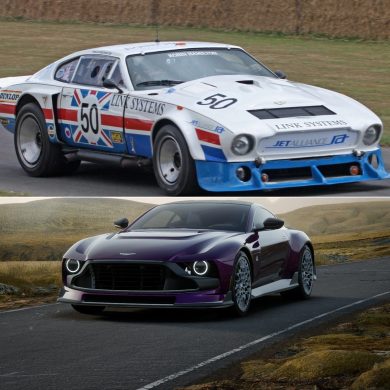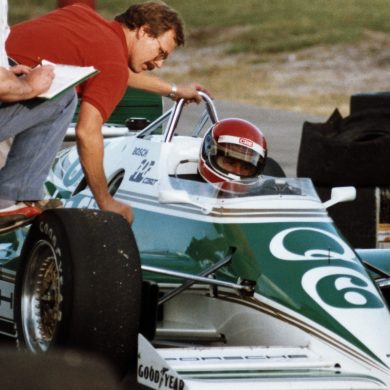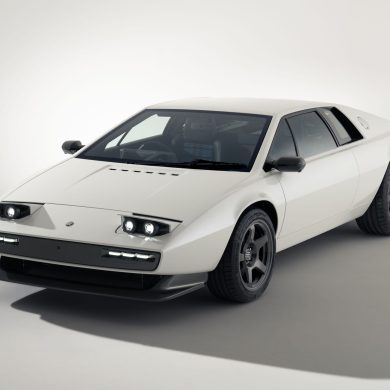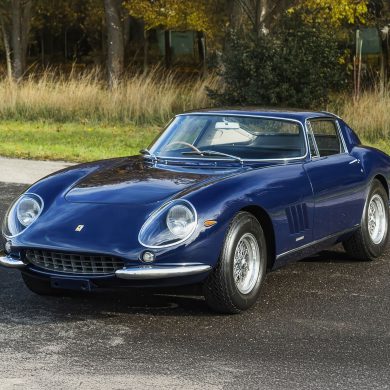Carroll Shelby, renowned for creating the iconic Cobra, conceived the idea of infusing his Shelby touch into Ford’s newly hot Mustang, leading to a perfect partnership. In 1967, the Mustang underwent slight body refinements, designed to accommodate Ford’s 390-cubic-inch big-block engine. Shelby opted for the Interceptor 428, adding a dual-carb intake to create the high-end GT500. Although officially rated at 355 horsepower, it actually produced around 400 horsepower, along with an impressive 420 foot-pounds of torque.
The GT500 also had the looks to match its performance. It featured a distinct front end with a unique hood scoop and grille-mounted driving lights, exuding an unmistakably aggressive character. At the rear, it sported rear-quarter scoops, a rear spoiler, and replaced the standard Mustang taillights with rectangular units and sequential turn signals borrowed from the 1966 Thunderbird, elevating its presence. Additional air scoops were integrated into the side coves ahead of the rear wheels, while a roll bar with inertia-reel shoulder harnesses added a touch of competition flavor to the car.
The Shelby GT500’s release signaled a wave of change for subsequent high-output Mustang production. While the GT350 once stood as the premier Shelby performer, it would slowly begin taking a back seat to the more robust GT500. This would be further exemplified in the year to follow, when the GT350 would have its output significantly cut, as its 289 cubic-inch powerplant was removed as a standard offering. For all intents and purposes, the GT500 now stood head and shoulders above all other vehicles within the Shelby line.
Photo Source: Bring A Trailer


